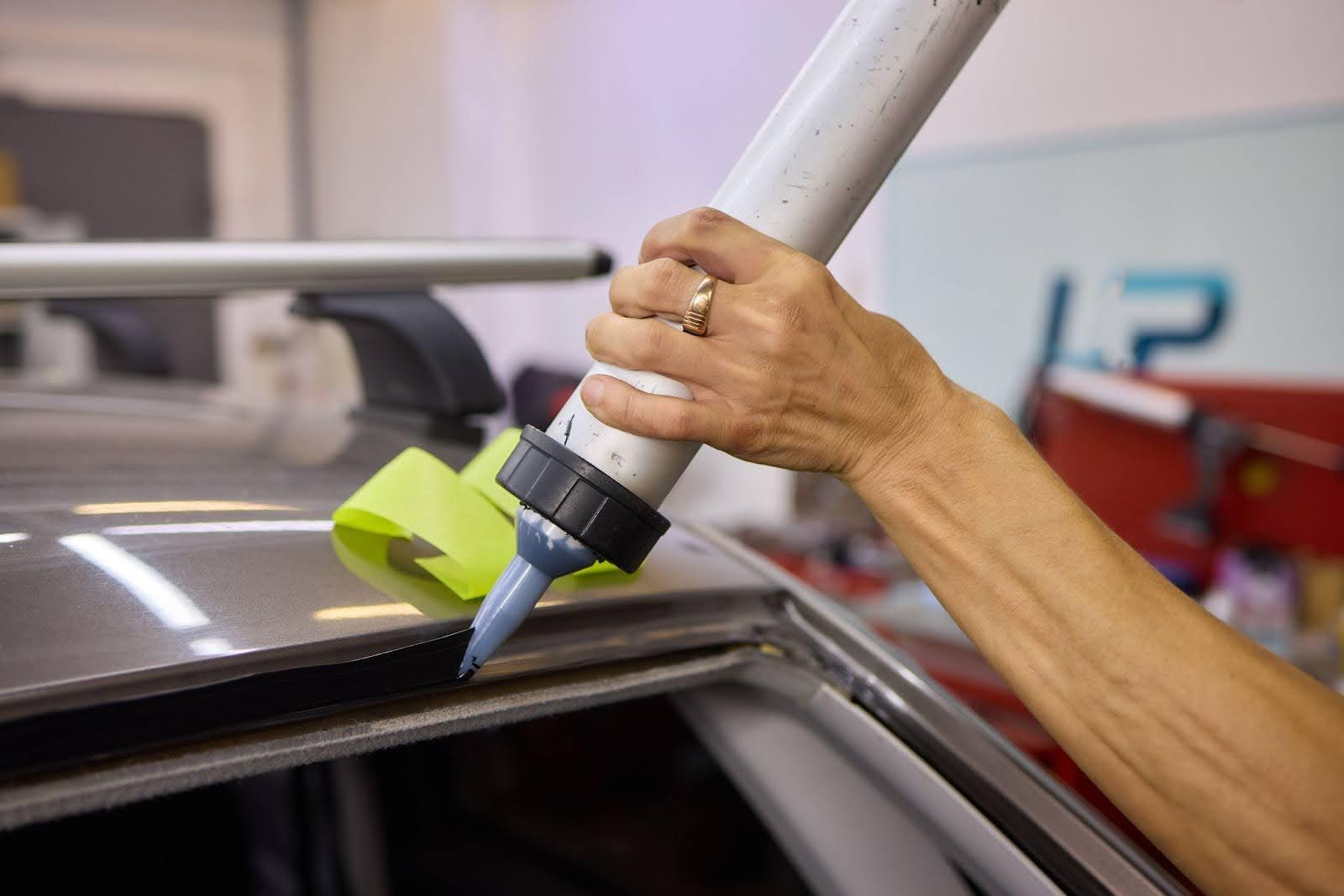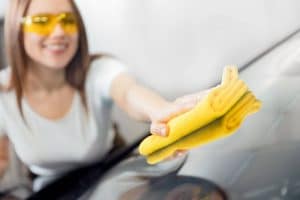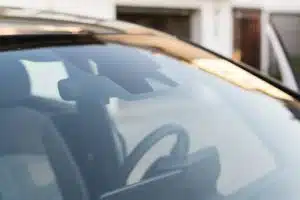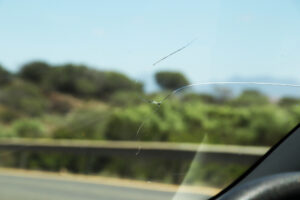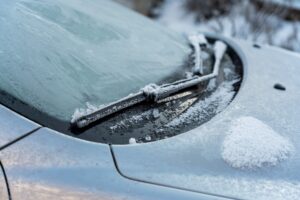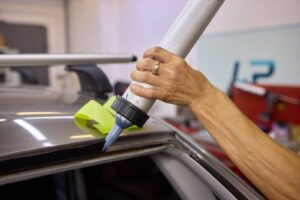Dealing with auto glass damage is a frustrating experience. Whether it’s a small chip from a stray pebble or a crack from a sudden temperature change, understanding how to handle these issues is important to keep your vehicle safe.
In this blog, we’ll answer some of the most common questions about auto glass repair. Our goal is to provide you with the knowledge you need to make informed decisions about your auto glass, ensuring you drive safely and confidently.
What causes auto glass damage?
Auto glass damage occurs from a variety of sources, often when least expected. Road debris usually occurs when the tires on vehicles ahead of you kick up rocks, gravel, and other materials, especially on highways or unpaved roads. These might strike your windshield or windows and cause chips or cracks.
Collisions may cause significant auto glass damage. The force of the impact can crack the windshield or shatter side windows.
On a cold day, turning on the car’s heater may cause the glass to expand rapidly due to the temperature difference, leading to cracks. Similarly, cooling the inside too quickly with air conditioning can have the same effect in hot weather.
Other environmental factors, such as hail, heavy winds, and falling branches during storms, directly impact and damage auto glass. Even exposure to harsh chemicals or salt used on roads in winter can weaken the glass over time, making it more prone to damage.
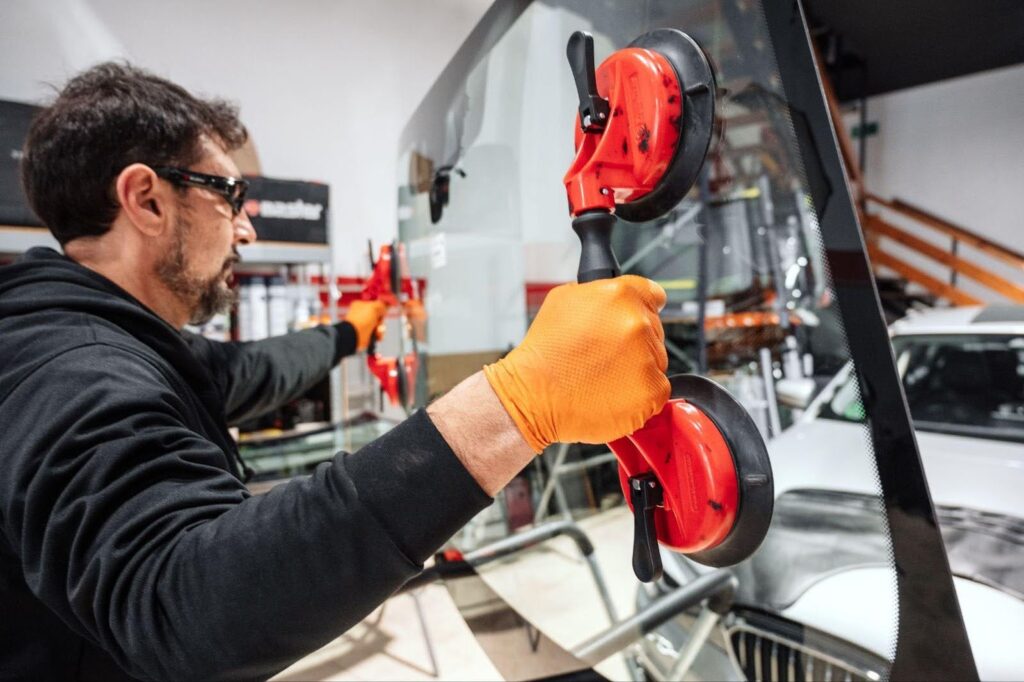
How long does auto glass repair take?
The time required for auto glass repair depends on several factors, but generally, it’s a relatively quick process. Here are a few key points that determine how long it might take:
Type of damage
Minor chips and cracks are usually quicker to repair and may take as little as 30 minutes. More extensive damage or multiple areas of damage might require more time.
Type of repair
The specific technique used can also affect the duration. A simple resin injection into a small chip is faster than a more extensive crack repair, which may involve more preparation and setting time.
Curing time
After the actual repair, the resin used to seal the windshield needs time to cure. Depending on the resin type, the application method, and environmental factors like temperature and humidity, this can take anywhere from a few minutes to an hour.
Replacement vs. repair
If the damage is too extensive for a repair and a complete windshield replacement is necessary, the process will take longer.
Replacing a windshield typically takes about an hour of labor, but it’s recommended that the vehicle remain stationary for at least an hour afterward to allow the adhesive used to mount the new windshield to cure properly.
This means you might expect a total time of two to three hours from start to finish.
Service location
The time can also vary based on whether the repair is done in a shop or the service is mobile. Mobile repairs might take a bit longer due to the setup time needed when the technician arrives on site.
However, you aren’t confined to a waiting room while waiting for your vehicle repairs. Instead, you could be at work or at home while a technician repairs your vehicle.
Understanding these factors can help set the right expectations when scheduling auto glass repair, ensuring you allocate enough time for a safe and effective repair.
Does insurance cover auto glass repair?
Whether insurance covers auto glass repair depends on several factors, including the type of coverage you have and the specifics of your insurance policy. Here’s a general overview:
Comprehensive coverage
Most comprehensive insurance policies cover auto glass repair and windshield replacement in Utah or whatever state you live in. This type of coverage generally applies when damage is caused by factors outside of a collision, such as road debris, vandalism, or natural disasters.
Deductible considerations
If your policy includes comprehensive coverage for auto glass, the cost of repair might be influenced by your deductible. You would pay out of pocket if the repair cost is less than the deductible. However, some policies may offer glass coverage with no deductible or a reduced deductible for glass repairs specifically. Contact your insurance company to find out what your policy covers.
Full glass coverage
Some insurance companies offer an optional add-on known as full glass coverage, which covers the cost of repairing or replacing the vehicle’s glass without a deductible. This can be particularly beneficial if you live in areas prone to road debris or have a higher risk of glass damage.
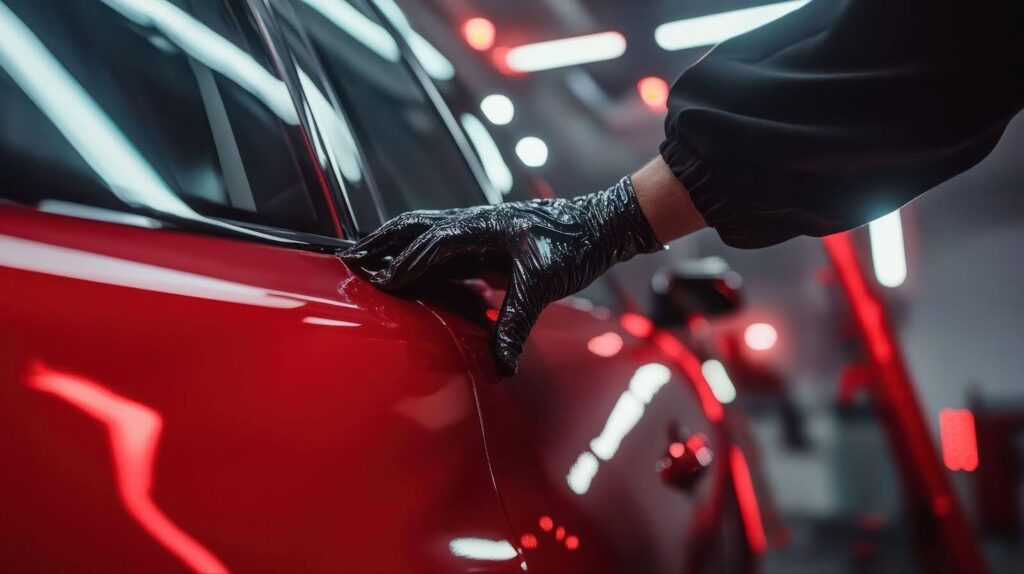
How can I maintain my auto glass after a repair?
Maintaining your auto glass after a repair helps ensure the longevity of the fix and keeps your windshield in good condition. Here are several tips on how to properly care for your auto glass post-repair:
Give the resin time to cure
After repairing a chip or crack, the resin used needs adequate time to cure. If possible, avoid driving the vehicle immediately. For windshield repair in Utah, your technician will advise you on the curing time needed, which will vary based on temperature and humidity.
Avoid harsh conditions
For the first few days after the repair, try to keep your vehicle in a controlled environment. Extreme temperatures and humidity may affect the setting of the resin. If possible, park your car in a garage or under cover during very hot or cold weather.
Do not wash the car immediately
Avoid high-pressure car washes and the use of harsh chemicals for at least a few days after your windshield repair in Utah. The water pressure and chemicals can weaken the repair before the resin has fully cured. Hand washing your car is generally safer during this period.
Leave the retention tape on
If your technician applies a retention tape over the repaired area, do not remove it for at least the first 24 hours after the repair. The tape helps to keep the resin in place while it cures and protects the area from dirt and debris.
Avoid stressing the glass
Try to prevent additional stress on the glass as it cures. This means avoiding slamming doors and driving on rough roads. Vibrations and jolts may displace the resin before it’s fully set.
Following these tips can help ensure that your auto glass repair holds well and that your windshield remains in excellent condition, enhancing your visibility and safety on the road.
Windshield repair with Utah Mobile Auto Glass
If you have auto glass issues, don’t wait for them to escalate. If you need windshield repair in Utah, let Utah Mobile Auto Glass care with precision and expertise for all your auto glass needs. Our experienced technicians are ready to provide top-quality repairs and maintenance, ensuring your vehicle’s glass remains in perfect condition. Contact Utah Mobile Auto Glass today to schedule a service and experience the peace of mind of knowing your auto glass is in the best hands. Trust us to keep you safe and your view clear on the road.


